What is Dynamic NFT?
Dynamic NFT (non-fungible token) is a type of NFT that is not static but changes over time. Unlike traditional NFTs that represent a fixed asset, such as an image or video, dynamic NFTs can evolve and display different content or behavior based on different conditions.
Dynamic NFTs can be programmed using smart contracts on blockchain platforms like Ethereum. These smart contracts can allow NFTs to react to various events or external data sources, such as current weather, stock prices, or data from social media.
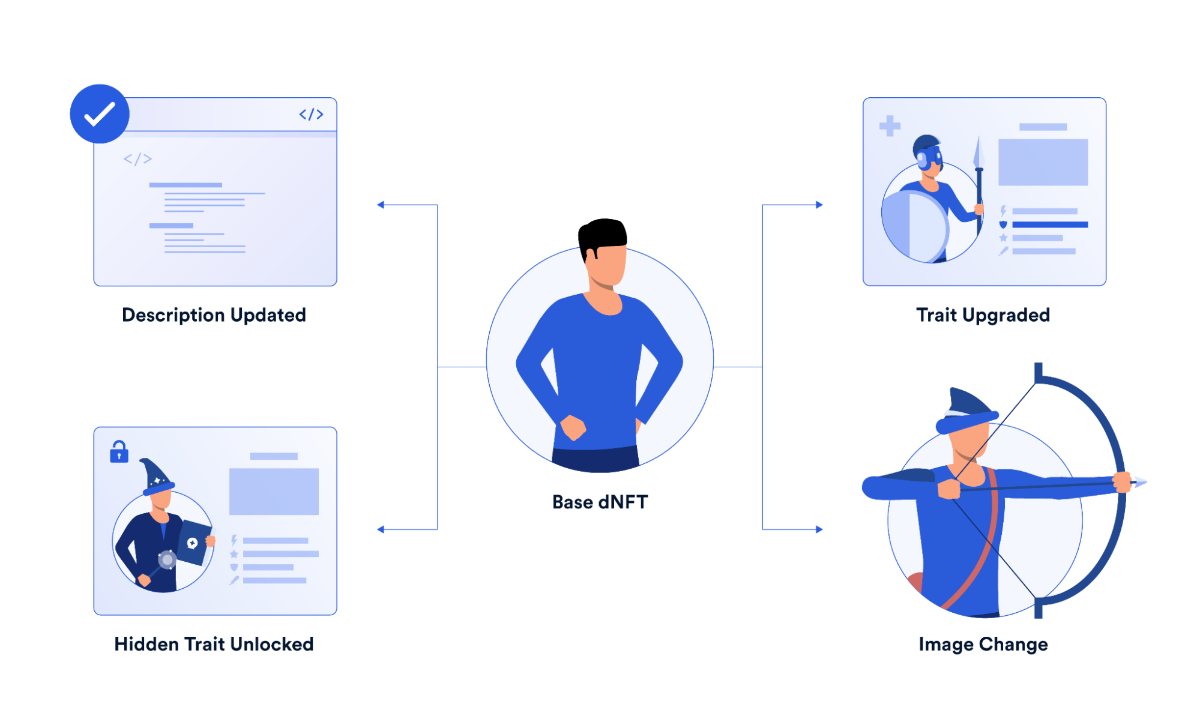 Dynamic NFT. Image source: Chainlink.
Dynamic NFT. Image source: Chainlink.The Difference Between Dynamic NFT and Static NFT
The main differences between Static NFTs and Dynamic NFTs lie mainly in how they work and how interactive they are.
- Static NFTs are assets that are unique and have fixed properties that do not change. For example, an image, video, or audio file. Once created, a static NFT cannot be modified or updated and its value cannot be changed.
- Dynamic NFTs are designed to change over time based on pre-programmed rules and conditions. They can respond to data sources and events, update their metadata, and interact with other smart contracts and NFTs.
Dynamic NFT Application
Here are some examples that show the applicability of Dynamic NFT. Some examples have been applied in real life, some have not, but they are all highly feasible.
LaMelo Ball Dynamic NFT
LaMelo Ball is a collection of 8 NFTs of NBA star LaMelo Ball. The highlight is that each NFT will be tied to LaMelo Ball’s achievements and level throughout the tournament. It will continuously change if LaMelo Ball scores, assists,…
Among them, the biggest change will be the NFT turning into Gold if LaMelo Ball wins the 2021 NBA Rookie of the Year award. In fact, he successfully became a rookie and the NFT has updated the off-white LaMelo holding the planet Saturn to a gold LaMelo holding the Sun.
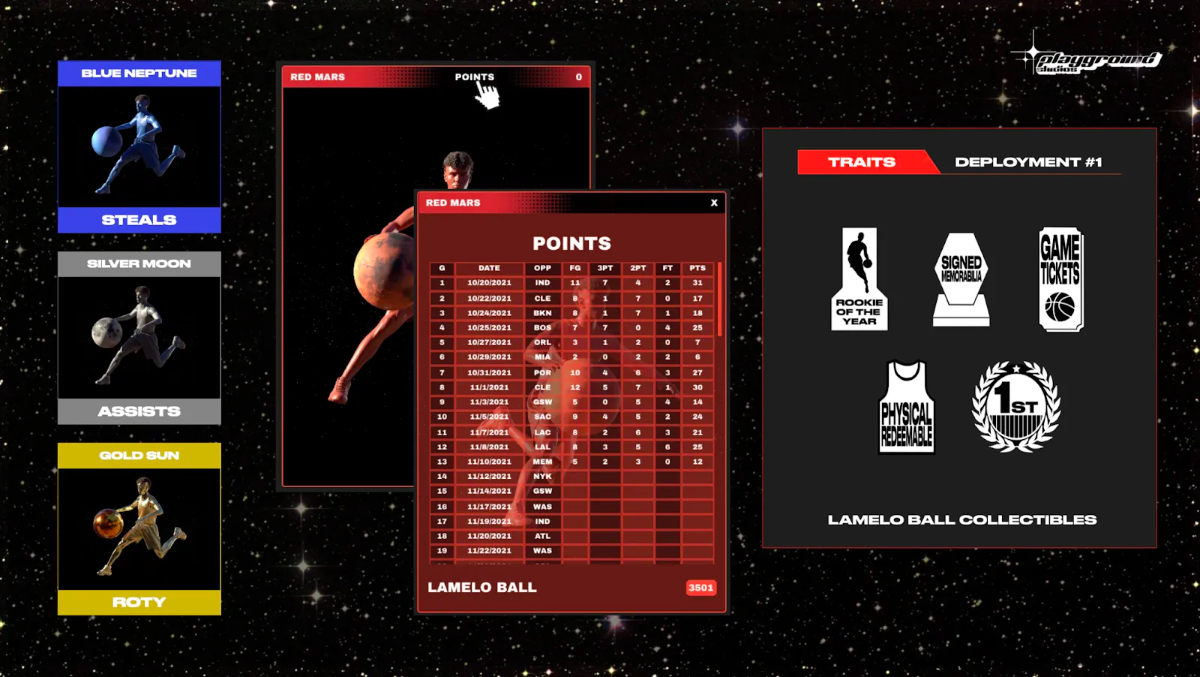 LaMelo Ball Dynamic NFT.
LaMelo Ball Dynamic NFT.Dynamic NFT in the car market
In the future, as more Real World Assets are tokenized into NFTs, they will need more information than just the name of each NFT. Therefore, using Static NFTs is not feasible. In order for real world assets like cars to be tokenized into the DeFi market and be able to be priced, they need Dynamic NFTs to include information like owner profiles, accident reports, mileage, etc.
Thereby, every time the car goes through an interaction, the value of the car will also change according to:
- Car value increases when: Car is fully maintained, accessories are replaced when damaged,…
- Car value decreases when: Car is involved in a traffic accident, has high mileage,…
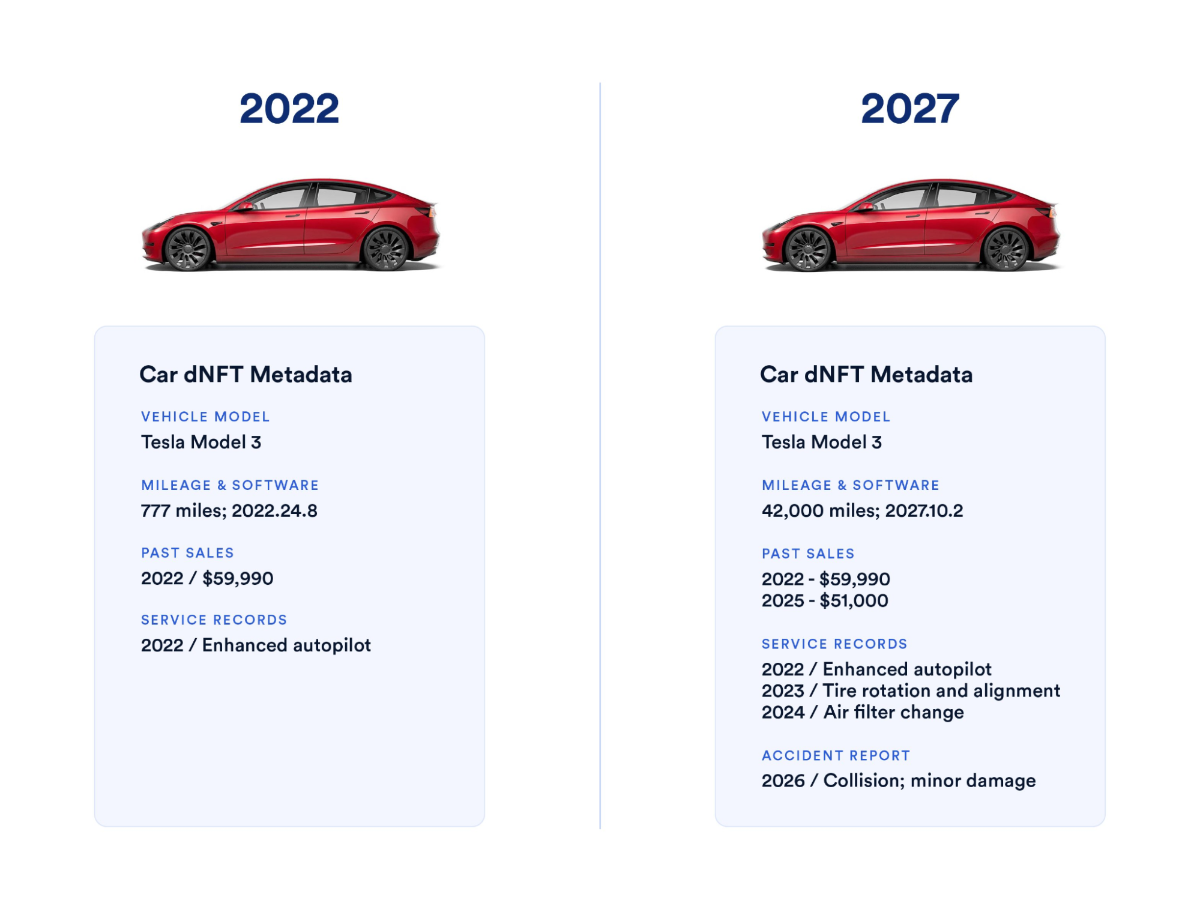 Dynamic NFTs in the automotive market. Image source: Chainlink.
Dynamic NFTs in the automotive market. Image source: Chainlink.Dynamic NFT in the real estate market
Similar to the car above, the value of real estate is also affected by many factors such as the state of infrastructure in the area, the number of years of use, etc. Every time the house is renovated, Dynamic NFT is something that can reflect that when it can update new records about that house.
For Static NFTs, you may need to create a new NFT on a new smart contract to update the changes to the house, while Dynamic NFT helps you update right in the smart contract.
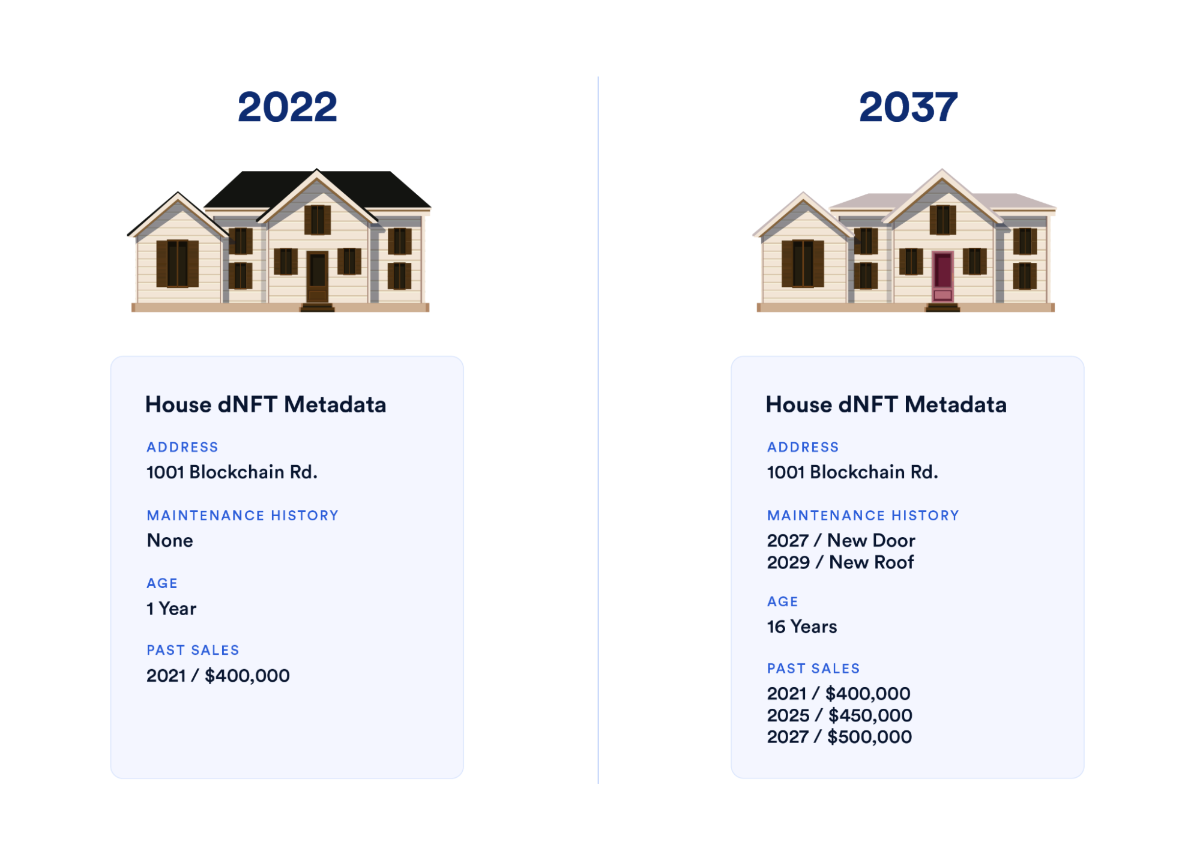 Dynamic NFTs in the real estate market. Image source: Chainlink.
Dynamic NFTs in the real estate market. Image source: Chainlink.Dynamic NFTs in Gaming
In the traditional gaming market, characters will have many features changed if they play long enough, play well, get lucky to receive items or spend money to buy upgrades. All of these features can be applied thanks to Dynamic NFT.
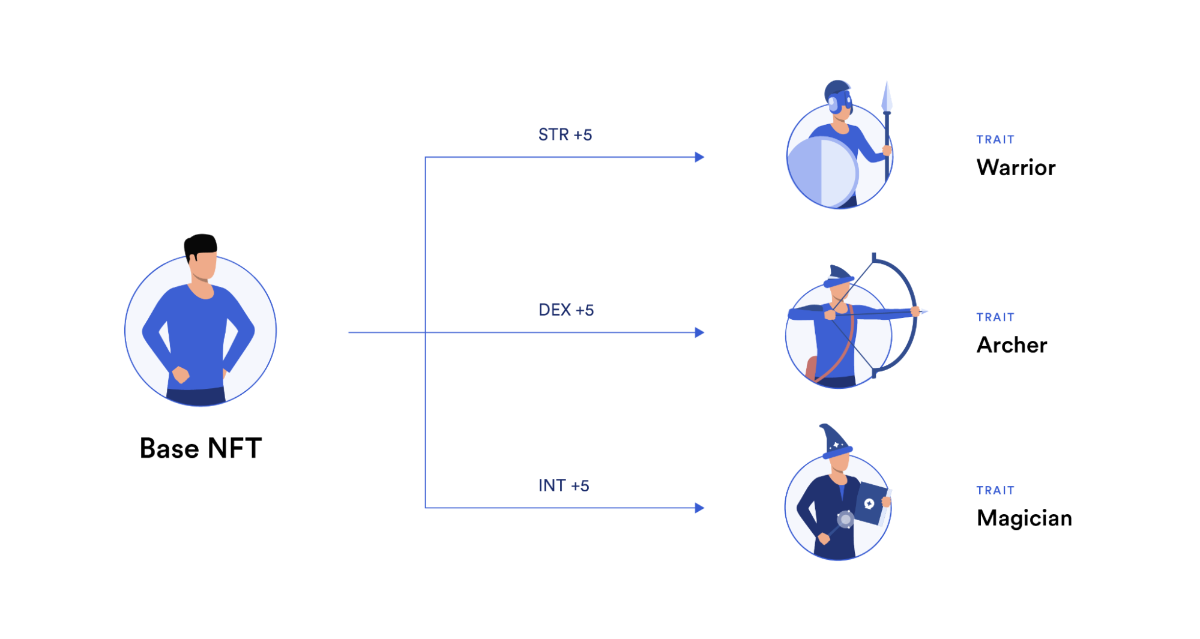 Dynamic NFTs in Gaming. Image source: Chainlink.
Dynamic NFTs in Gaming. Image source: Chainlink.Benefits and Limitations of Dynamic NFTs
Benefits of Dynamic NFT
Dynamic NFTs offer many benefits over static NFTs, including:
- Flexibility: Dynamic NFTs can change and evolve over time.
- Interactivity: Dynamic NFTs can be interacted with to unlock new features.
- Real-time data: Dynamic NFTs can integrate real-time data inputs to change based on that data.
- Personalization: Dynamic NFTs can be personalized for each user just like how real assets work in the real world.
- Rarity: If Static NFTs differ in smart contracts but there may be some similar items, Dynamic NFTs can be even more unique because they integrate different conditions.
- New opportunities: Dynamic NFTs can create new revenue streams as they have many new applications, unlocking the potential for other areas of NFT Finance to emerge.
Read more What is NFT Finance (NFTFi)? Bringing the world of finance to NFT .
Limitations of Dynamic NFT
Here are some potential downsides of dynamic NFTs:
- Complexity: Dynamic NFTs are more complex than traditional NFTs and require more technical knowledge to create and manage.
- Smart Contract Risks: Dynamic NFTs rely heavily on smart contracts to function. If hacked, it could result in loss or interference with the NFT.
- Limited Compatibility: Since Dynamic NFTs are new, they have many limitations when it comes to compatibility between blockchain platforms and marketplaces.
- Difficult to value: Valuing dynamic NFTs can be difficult because their value can change over time and depends on the conditions set in the smart contract.
- Higher gas fees: Dynamic NFTs require more computational resources to execute than traditional NFTs, which can result in higher gas fees for users.
How Dynamic NFTs Work
Here are step-by-step descriptions explaining how dynamic NFTs work:
- Dynamic NFTs are created using smart contracts on blockchain platforms such as Ethereum, BNB Chain,…
- Smart contracts are self-executing programs stored on the blockchain. They allow for the automation of certain tasks and actions, including managing Dynamic NFTs.
- When a dynamic NFT is created, it is assigned a unique identifier on the blockchain that cannot be copied or changed. This identifier can be used to track the ownership and history of the NFT.
- The smart contract that manages Dynamic NFTs contains code that specifies the conditions under which the NFT will change. These can be designed to change over time based on specific conditions set in the smart contract.
- When the conditions specified in the smart contract are met, the NFT will change according to pre-defined rules. This can include changing the appearance, functionality, or value of the NFT.
- Changes made to an NFT are recorded on the blockchain and visible to anyone with access to the blockchain network. This ensures transparency and allows for easy tracking of the history and ownership of the NFT.
Learn more about smart contracts .
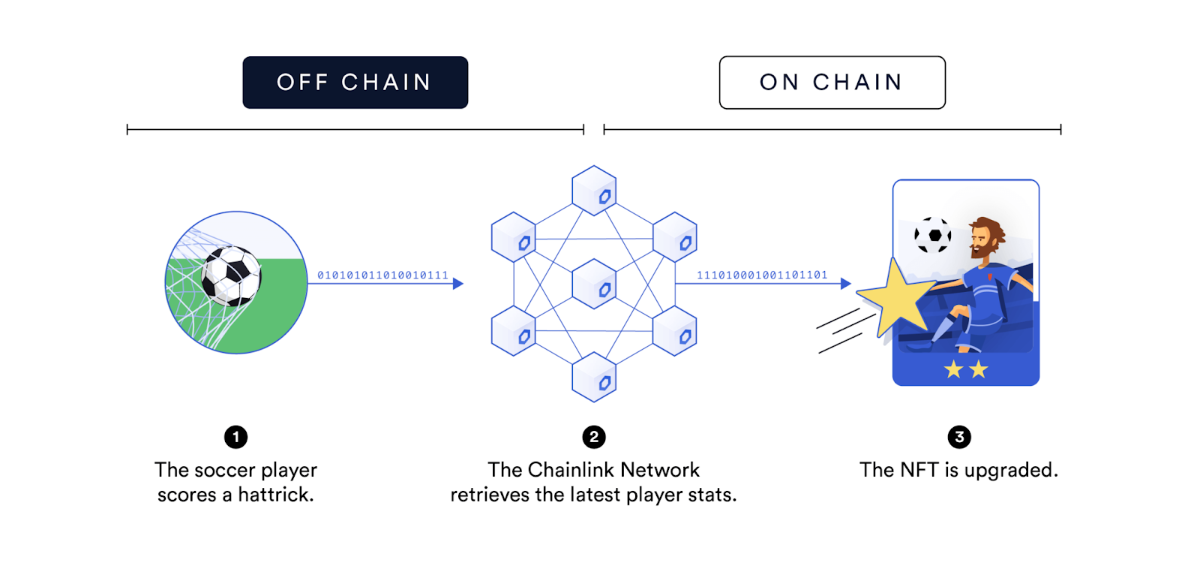
In general, Dynamic NFTs do not work much differently than Static NFTs. They are both created on smart contracts. The difference is that Dynamic NFTs use input data to influence the output.
- Input data: Off-chain data like weather, match results,… or On-chain data like cryptocurrency prices.
- Output: NFT will be changed based on pre-set conditions.
Dynamic NFT Projects
Currently, there are many projects on the market that pay attention to Dynamic NFT. They are divided into 2 main groups:
- Infrastructure project for Dynamic NFT.
- Project using Dynamic NFT.
Infrastructure Project for Dynamic NFT
There are quite a few supporting projects in this branch. However, other projects are quite small and Chainlink is a project with many other products that complement the development of Dynamic NFT. Therefore, this article only mentions Chainlink products.
Chainlink is a leading infrastructure project in the Web3 and DeFi market. Currently, Chainlink develops many different products such as Data Feeds, Automations, VRF, CCIP,… Below are some products participating in the operation of Dynamic NFT.
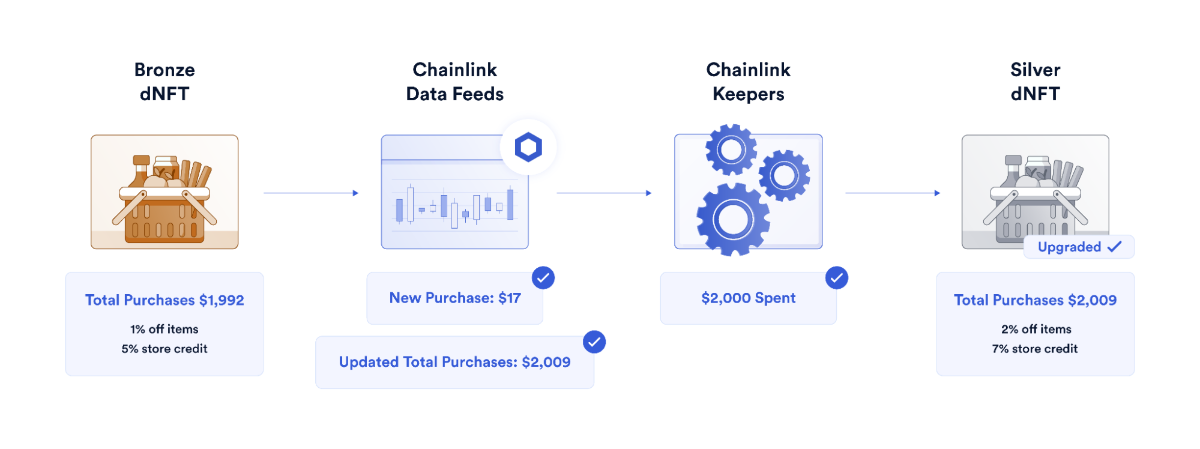
For example: Currently, your supermarket loyalty card is Bronze. If your total spending exceeds 2,000, you will be upgraded to Silver with higher benefits. Chainlink will support:
- With Chainlink Data Feeds, this Oracle product will update the off-chain data from the store to update the total amount the customer purchased as $2,009 after the latest order of $17.
- With pre-programmed conditions, Chainlink Keepers (renamed Automations) will trigger a change on the NFT smart contract. Changing the NFT loyalty card from bronze to silver with higher benefits.
Learn more about Chainlink .
Projects using Dynamic NFT
In theory, Dynamic NFT can be used in many different projects from DeFi, Web3 Game, Metaverse,… However, Web3 Game and Collectibles are the areas with the highest applicability for Dynamic NFT.
- Gaming Projects Using Dynamic NFT: Axie Infinity, Decentraland, Dream Quest,…
- Collectibles using Dynamic NFT: Azuki & BEANZ, Doodles, Organic Growth Crystal Reef,…
Learn more about Doodles NFTs .
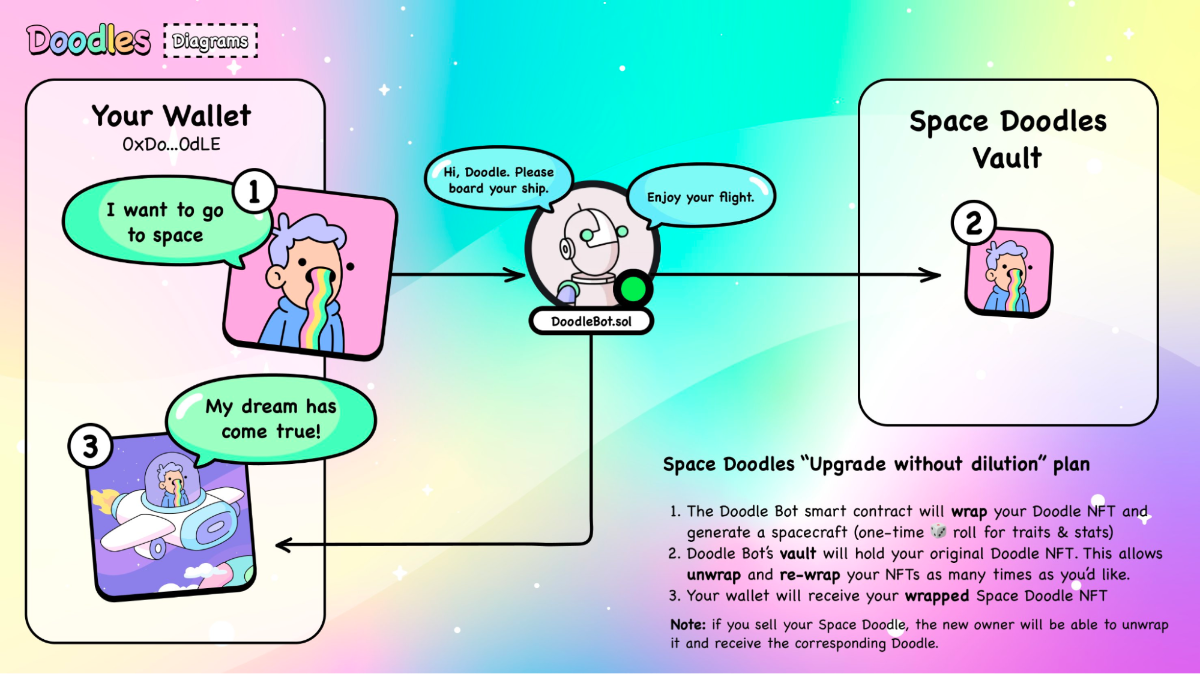 Doodles Dynamic NFT.
Doodles Dynamic NFT.


